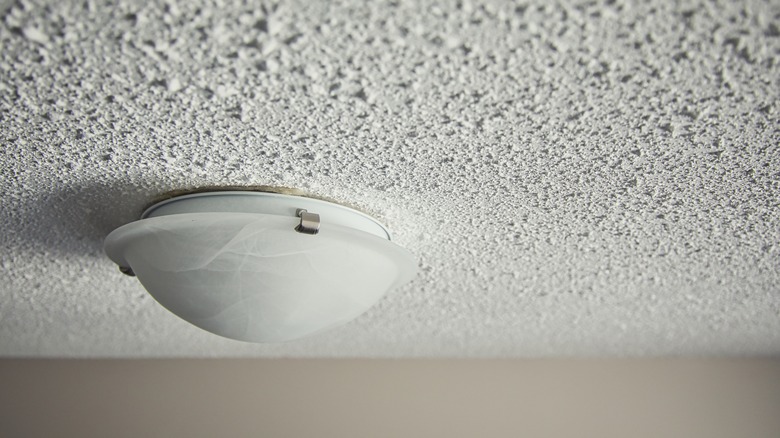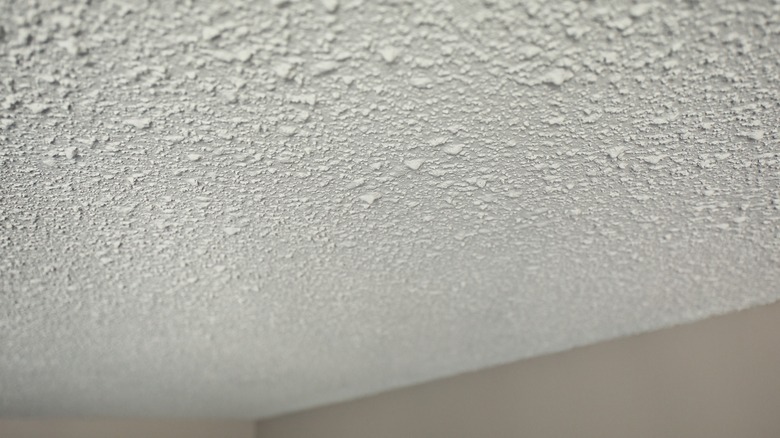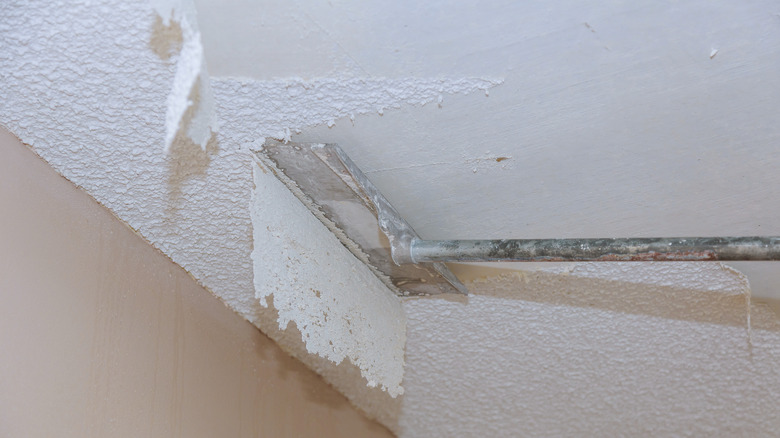Why Do Homes Have Popcorn Ceilings?
If entering a house built in the mid-to-late 20th century, you're bound to find textured ceilings accenting individual rooms throughout the residence. One specific style of textured ceiling, the popcorn ceiling, became especially popular at this time, with its bumpy, crunchy appearance scaling the tops of many homes and apartment units. As the new century arrived over 20 years ago, these ceilings proved to be yet another fad to come and go with time.
Popcorn ceilings have certainly decreased in popularity over the past few decades due to their lack of purpose and outdated feel, often considered tacky by younger generations. However, the homes in which they still exist offer a glimpse of 20th-century life, bringing to mind childhood experiences for some and possibly other blissful memories of the past for others. Popcorn ceilings have their advantages and disadvantages, though the story of the design's rise to fame remains relatively uneventful. Here's why popcorn ceilings exist and how the general public feels about them today.
How did popcorn ceilings originate?
Popcorn ceilings were first used in the 1930s after being created by a British firm as a way to cover imperfections and block out unwanted noise from outside. This feature then surged in popularity during the 1950s, given that installation costs for the product were relatively inexpensive and they were easy to install. During the construction process, builders sprayed the coating onto an already completed smooth ceiling, which created a bumpy effect on the ceiling once fully dried.
Popcorn ceilings remained popular over the course of the next several decades for the same reasons that they grew popular in the first place: Convenience and affordability. Builders found the ceiling addition especially beneficial since it helped disguise cracks, dents, and flubs in the contractors' handiwork. Since popcorn ceilings were believed to improve a room's acoustics, as well, they were especially treasured in multi-level homes and apartment complexes.
The public's opinion
Popcorn ceilings were truly products of their time, but is the textured style still considered trendy or relevant today? In short, no. Modern-day home buyers are often turned off by popcorn ceilings and textured ceilings in general, opting for a smooth finish that provides a more contemporary look instead. For some buyers, popcorn ceilings may serve as a dealbreaker when choosing a house, likely because removing them can be expensive. Contractors will charge around $1 to $2 per square foot for popcorn ceiling removal, with the average full project equating to approximately $1,700. In fact, a direct correlation exists between resale value and the removal of popcorn ceilings from homes. In other words, ridding your home of any popcorn ceiling left over from previous decades may increase its overall value.
Home buyers may also be averse to the impending health hazard of popcorn ceilings. Some older varieties of the added texture consist of asbestos, which can cause cancer or serious health challenges when inhaled or ingested (via Classic Remodeling). Homes built more recently tend to feature popcorn ceilings constructed from styrofoam instead. But those living in homes with popcorn ceilings built before or during the 1980s should test for asbestos by hiring a professional to inspect them. Popcorn ceilings also show dirt, dust, and spiderwebs quite easily, requiring homeowners to clean these surfaces more often to keep them looking pristine.


